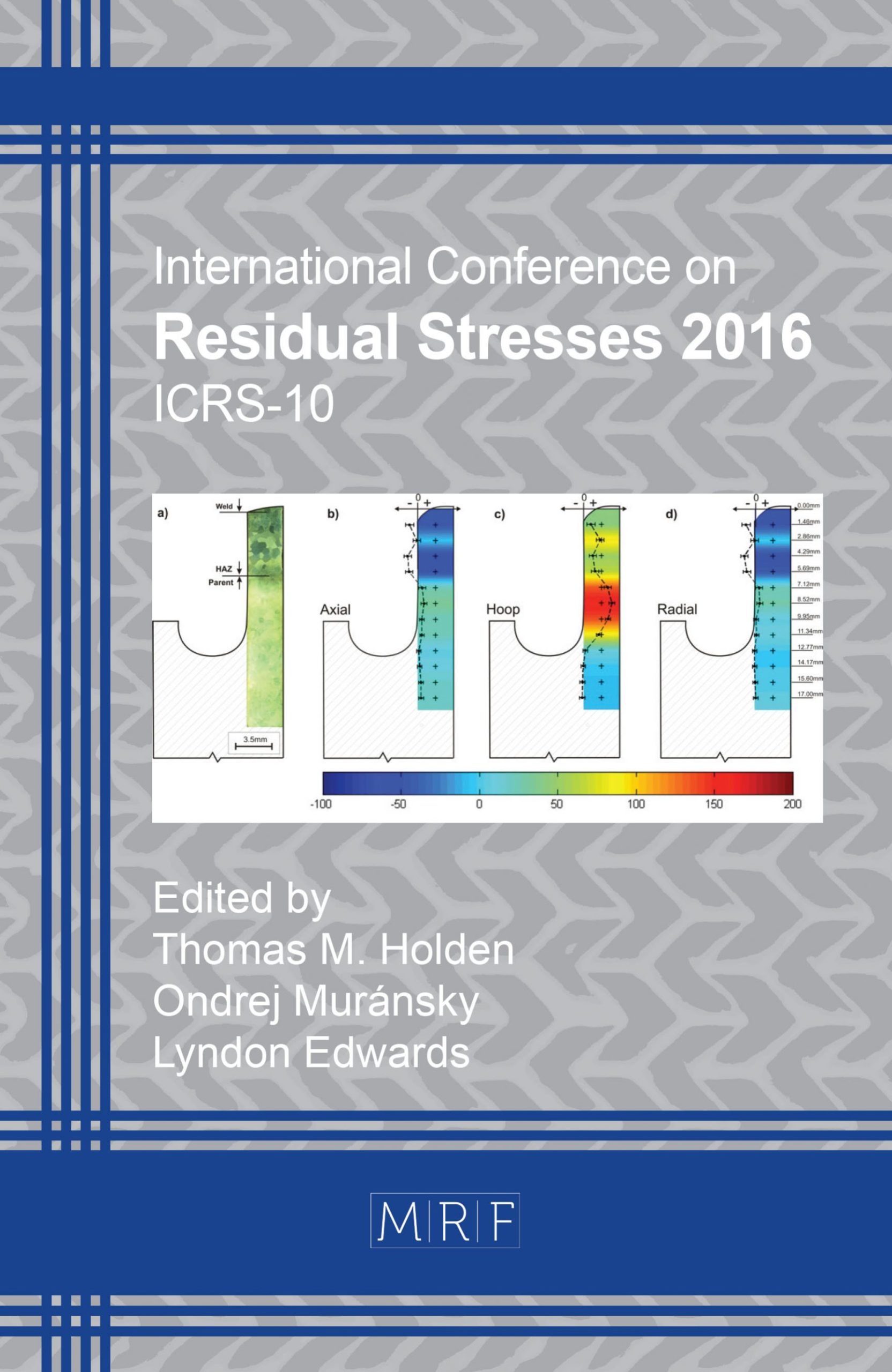Effect of Plasticity on Residual Stresses Obtained by the Incremental Hole-drilling Method with 3D FEM Modelling
E. Van Puymbroeck, W. Nagy, H. De Backer
download PDFAbstract. The incremental hole-drilling method is used to determine high residual welding stresses in an orthotropic bridge deck. When comparing the measurement results with a theoretical residual stress distribution of an orthotropic steel deck, a large difference in sign and magnitude of the residual stress values is observed. These measurement results are presented in another paper [1]. The test method, specified in ASTM E837-13a only applies when the material behavior is linear-elastic. Relaxed-plastic strain can be detected in the region of the bored hole for the evaluation of high residual welding stresses. This plastic behavior can result in a significant error of the residual stresses. In this paper, the hole-drilling procedure is simulated and the effect of plasticity on the determination of residual stresses is studied with three-dimensional finite element modelling. The calculation software Siemens NX 9.0 is used to simulate the hole-drilling procedure with both linear-elastic and elastic-plastic material behavior. First, a 3D model is set up for uniform in-depth residual stress fields with a linear-elastic material behavior to determine the calibration coefficients. The same model is used to determine similar calibration coefficients but this time with a simplistic model of material plasticity. The effect of plasticity on the uniform in-depth residual stresses is determined. The residual stresses obtained under the assumption that the material behavior is linear-elastic are an overestimation. In future research, residual strains for non-uniform in-depth residual stresses can also be studied with similar models. This will result in a more accurate determination of the residual weld stresses present in bridge constructions.
Keywords
Residual Welding Stresses, Incremental Hole-drilling Method, FEM, Plasticity Effects
Published online 12/22/2016, 6 pages
Copyright © 2016 by the author(s)
Published under license by Materials Research Forum LLC., Millersville PA, USA
Citation: E. Van Puymbroeck, W. Nagy, H. De Backer, ‘Effect of Plasticity on Residual Stresses Obtained by the Incremental Hole-drilling Method with 3D FEM Modelling’, Materials Research Proceedings, Vol. 2, pp 235-240, 2017
DOI: http://dx.doi.org/10.21741/9781945291173-40
The article was published as article 40 of the book Residual Stresses 2016
![]() Content from this work may be used under the terms of the Creative Commons Attribution 3.0 licence. Any further distribution of this work must maintain attribution to the author(s) and the title of the work, journal citation and DOI.
Content from this work may be used under the terms of the Creative Commons Attribution 3.0 licence. Any further distribution of this work must maintain attribution to the author(s) and the title of the work, journal citation and DOI.
References
[1] Van Puymbroeck, E., Nagy, W. and De Backer, H., Determination of residual stresses with the incremental hole-drilling method to improbe the design of critical components in bridge construction, 16th International Conference and Exhibition : Structural Faults & Repair, 2016.
[2] Beghini, M., Bertini, L. and Santus, C., A procedure for evaluating high residual stresses using the blind hole drilling method including the effect of plasticity, The Journal of Strain Analysis for Engineering Design, Vol. 45(4), 2010. http://dx.doi.org/10.1243/03093247JSA579
[3] ASTM E837-13a, Standard Test Method for Determining Residual Stresses by the Hole-Drilling Strain-Gage Method, ASTM International, 2015.
[4] Vishay Measurements Group, Model RS-200 Milling Guide Instruction Manual Version 2.0, Micro-Measurements, USA, 2011.
[5] Rendler, N.J. and Vigness, I., Hole-drilling strain-gage method of measuring residual stresses, Experimental Mechanics, Volume 6, Issue 12, pp 577-586, 1966. http://dx.doi.org/10.1007/BF02326825
[6] Nau, A., Scholtes, B., Evaluation of the High-Speed Drilling Technique for the Incremental Hole-Drilling Method, Experimental Mechanics, 53, 531-542, 2013. http://dx.doi.org/10.1007/s11340-012-9641-1
[7] Beghini, M., Bertini, L., Recent Advances in the Hole Drilling Method for Residual Stress Measurement, Journal of Materials Engineering and Performance, ASM International, 7, 163-172, 1998. http://dx.doi.org/10.1361/105994998770347882
[8] Aoh, J.-N., Wei, C.-S., On the Improvement of Calibration Coefficients for Hole-Drilling Integral Method: Part I-Analysis of Calibration Coefficients Obtained by a 3-D FEM Model, Journal of Engineering Materials and Technology, ASME, Vol. 124, 250-258, 2002. http://dx.doi.org/10.1115/1.1416685































